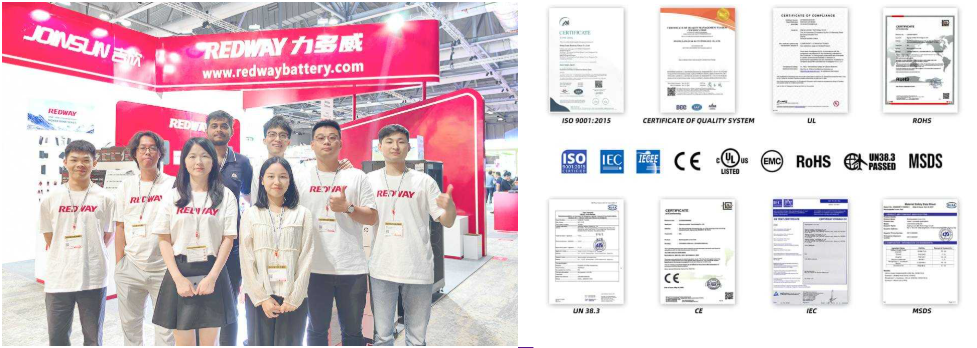Stacking batteries can be safe if done correctly, but it comes with risks such as overheating and short circuits. Proper stacking techniques and precautions must be followed to ensure safety and optimal performance.
What Are the Risks of Stacking Batteries?
Stacking batteries can pose several risks:
- Overheating: Poor ventilation can lead to heat buildup.
- Short Circuits: Contact between terminals can cause dangerous short circuits.
- Physical Damage: Tipping or falling batteries can result in physical damage or leakage.
Chart: Risks Associated with Improper Battery Stacking
| Risk | Description |
|---|---|
| Overheating | Can lead to reduced lifespan or failure |
| Short Circuits | May cause fires or damage to equipment |
| Physical Damage | Tipping can result in leaks or battery failure |
How Should Batteries Be Stacked Safely?
To stack batteries safely:
- Vertical Position: Always stack batteries vertically to prevent tipping.
- Secure Fastening: Use straps or brackets to secure them.
- Adequate Ventilation: Ensure there is enough airflow around stacked batteries.
Chart: Safe Battery Stacking Practices
| Practice | Explanation |
|---|---|
| Vertical Orientation | Reduces risk of tipping |
| Secure Fastening | Prevents movement during operation |
| Ventilation | Helps dissipate heat |
What Types of Batteries Can Be Stacked?
Not all batteries are suitable for stacking:
- Lead-Acid Batteries: Generally safe if stacked properly.
- Lithium-Ion Batteries: Can be stacked but require careful monitoring due to self-heating.
- Dewalt Power Stack Batteries: Designed for compact stacking but should follow manufacturer guidelines.
What Precautions Should Be Taken When Stacking?
When stacking batteries, consider these precautions:
- Same Type Only: Only stack batteries of the same type and capacity.
- Insulation: Use insulating materials between different battery types.
- Regular Inspection: Periodically check for signs of wear or damage.
How Do Dewalt Power Stack Batteries Compare When Stacked?
Dewalt Power Stack batteries are designed for compact use, allowing for vertical stacking while maintaining performance. They feature advanced thermal management systems that help mitigate overheating risks associated with stacking.
Can Self-Heating Lithium Batteries Be Stacked Safely?
Self-heating lithium batteries can be stacked, but caution is necessary:
- Monitor temperature closely during use.
- Ensure proper ventilation to prevent overheating.
- Avoid stacking in enclosed spaces without airflow.
What Are the Best Practices for a Van Battery Stack?
For a van battery stack:
- Use secure mounting systems to prevent movement during travel.
- Ensure all connections are tight and insulated.
- Regularly check battery health and charge levels.
Expert Views“Stacking batteries can be effective if done correctly. Always prioritize safety by following best practices and manufacturer guidelines to avoid risks associated with improper stacking.” — Expert from Redway Power
Best Alternatives for Battery Solutions
When considering alternatives or competitors in the market for battery solutions suitable for stacking, several brands stand out for their quality and reliability. Below is a chart showcasing five notable competitors, including Redway Power.
| Brand | Battery Type | Key Features | Best Use Case |
|---|---|---|---|
| Redway Power | LiFePO4 | Custom solutions for various applications | Golf carts, traction applications |
| Optima | AGM | Spiral cell technology | Automotive and marine |
| VMAXTANKS | AGM | Deep cycle capability | Solar setups |
| Renogy | Lithium | High efficiency | Off-grid systems |
| Battle Born | Lithium Ion | Lightweight, long lifespan | RVs and marine applications |
Create Your Own LiFePO4 Rack-mounted Lithium Batteries
Conclusion
In conclusion, stacking batteries can be an effective way to save space and improve organization when done correctly. By following safety precautions and manufacturer guidelines, users can ensure optimal performance and longevity from their battery systems while minimizing risks associated with improper stacking practices.
News
German Consortium Develops Innovative Battery Cell Stacking Production System
In February 2025, a German consortium secured €3.64 million in federal funding to develop a novel production system for battery cell stacking, aiming to enhance manufacturing efficiency and flexibility in energy storage solutions.
Samsung Explores Stacked Battery Designs for Future Smartphones
Samsung is researching stacked battery technology to improve energy density in upcoming smartphones, such as the Galaxy S26 Ultra, potentially offering a 5,500mAh battery without increasing device thickness.
Microvast Introduces All-Solid-State Battery with Bipolar Stacking Design
In January 2025, Microvast unveiled its True all-solid-state battery featuring a bipolar stacking design, enhancing energy density and simplifying interconnections between cells, modules, and packs.
FAQs
- Can batteries be stacked on top of each other?
Yes, batteries can be stacked on top of each other, but it is essential to ensure they are of the same type and fully insulated to prevent contact between terminals. Proper ventilation and secure fastening are crucial to avoid overheating and potential hazards. - Is it OK for batteries to touch each other?
No, it is not advisable for batteries to touch each other, especially if they have exposed terminals. Contact can lead to short circuits, overheating, or even fires. Always store batteries separately or use insulation to prevent contact. - Is it bad to stack batteries?
Stacking batteries can be risky if not done correctly. Improper stacking may lead to physical damage, overheating, or short circuits. It is best to follow manufacturer guidelines and ensure proper ventilation and stability when stacking batteries. - When storing batteries, be sure to stack them on top of each other?
It is not recommended to stack batteries directly on top of each other for storage. Instead, store them upright in a cool, dry place, ensuring they do not touch each other to minimize risks of short circuits and damage. - Is it safe to stack lithium-ion batteries?
Yes, but ensure proper ventilation and monitor temperatures closely. - What happens if I stack different types of batteries?
Stacking different types can lead to imbalances and potential hazards; always stack similar types together. - How can I prevent overheating when stacking batteries?
Ensure adequate ventilation around stacked batteries and avoid placing them in enclosed spaces without airflow.
When batteries are stacked, they can experience physical damage, leading to short circuits if terminals touch. Stacking can also hinder ventilation, increasing the risk of overheating. In extreme cases, this could result in battery failure or fire, particularly with lithium-ion batteries that are sensitive to pressure and temperature changes.How to Put Batteries on Top of Each Other?
If you must stack batteries, ensure they are of the same type and fully insulated to prevent contact between terminals. Use a non-conductive material between layers and avoid heavy stacking that could crush the batteries. However, it’s better to store them upright in designated battery storage containers for safety.Can You Store AA Batteries Touching Each Other?
Storing AA batteries touching each other is not recommended. While alkaline batteries are less prone to short-circuiting than lithium batteries, contact can still lead to corrosion or leakage. It’s best to store them in their original packaging or in a battery organizer to prevent direct contact and ensure safety.






